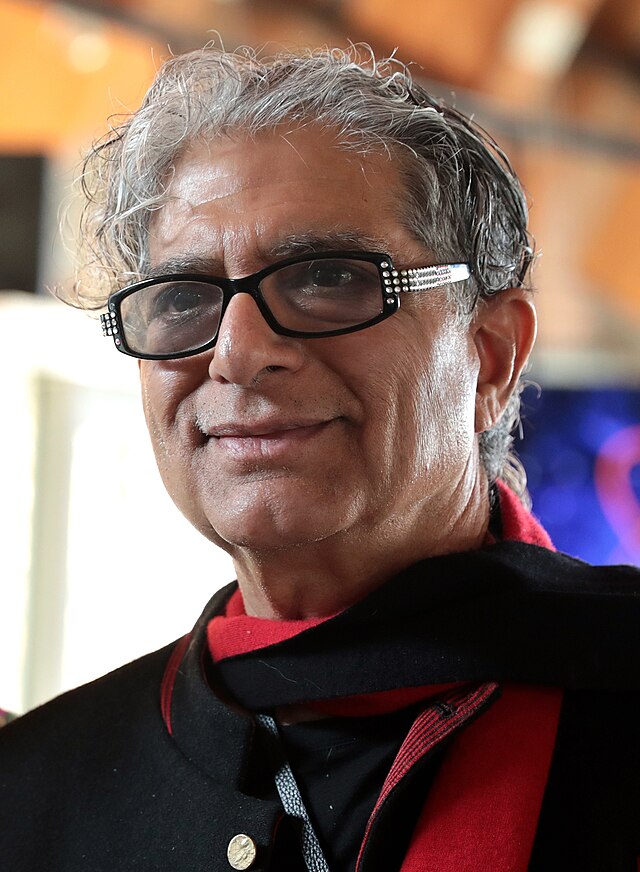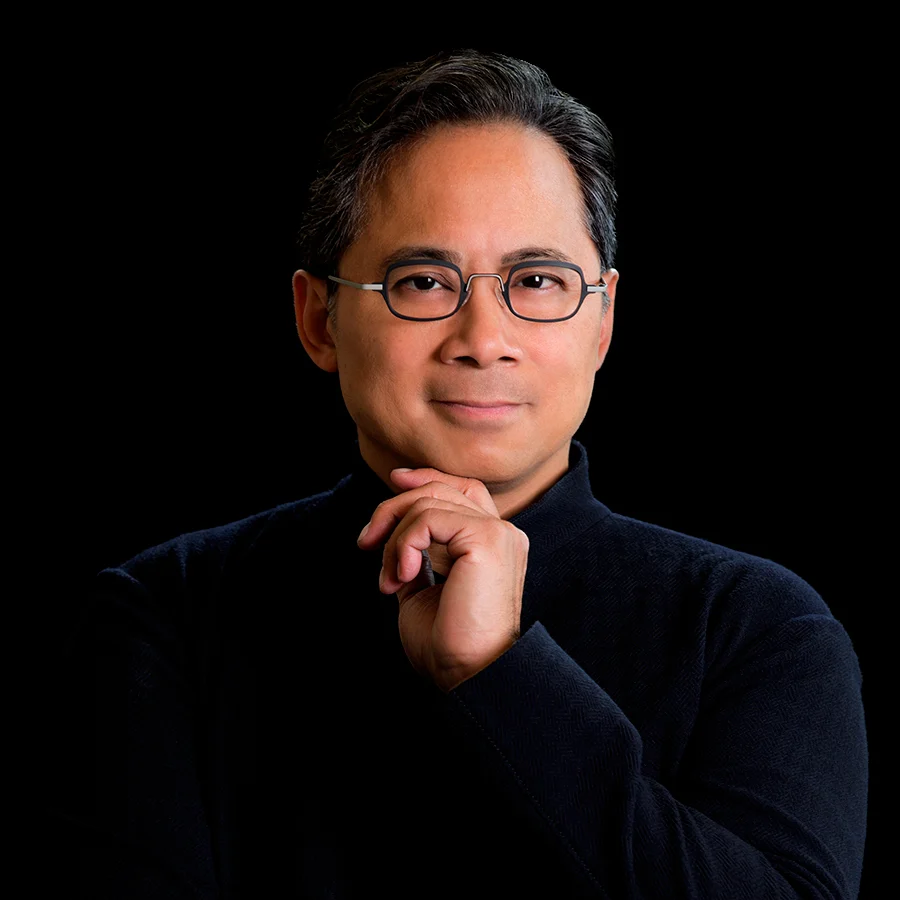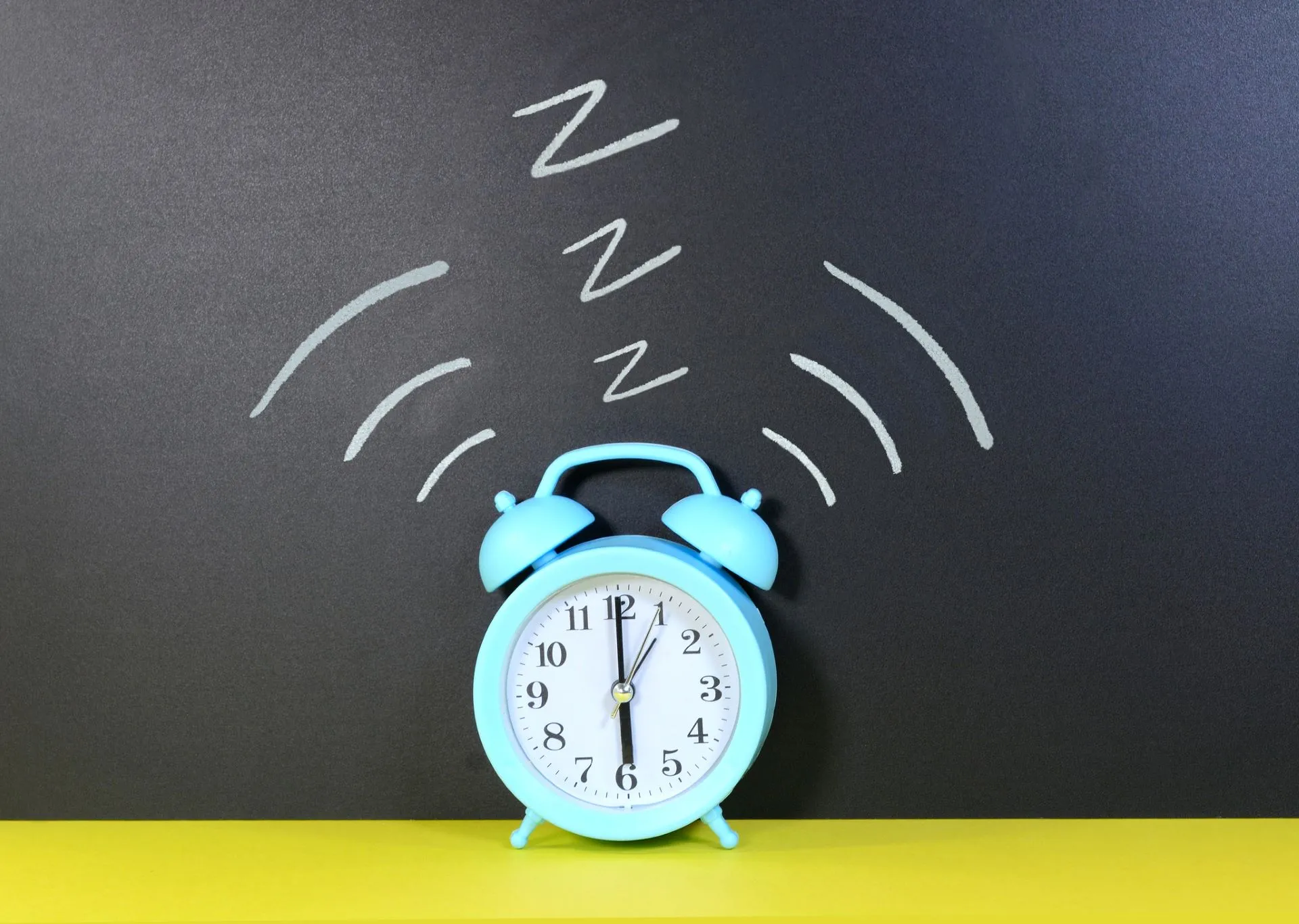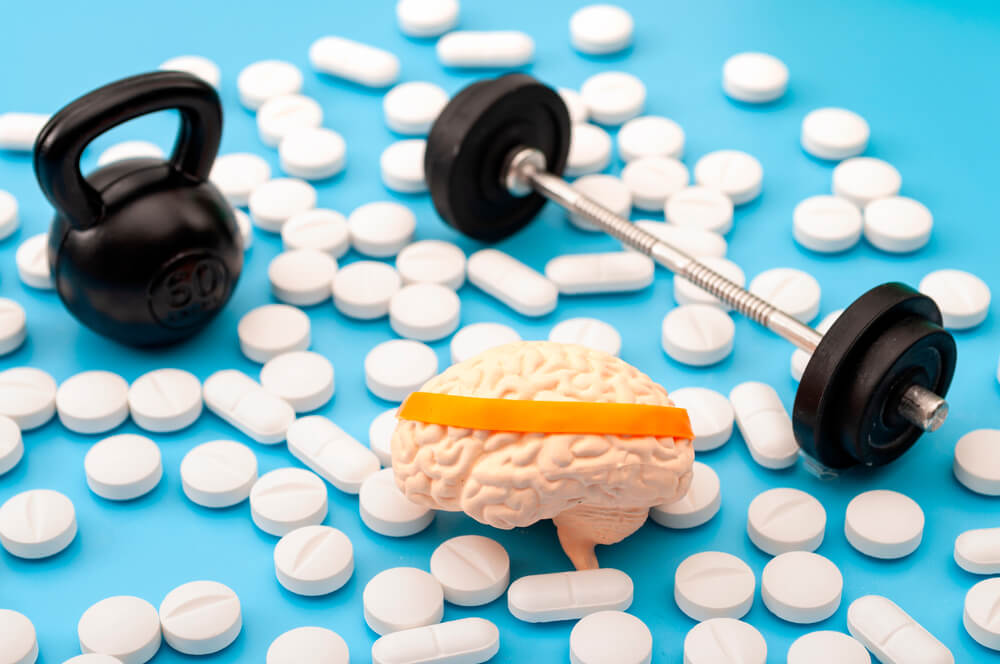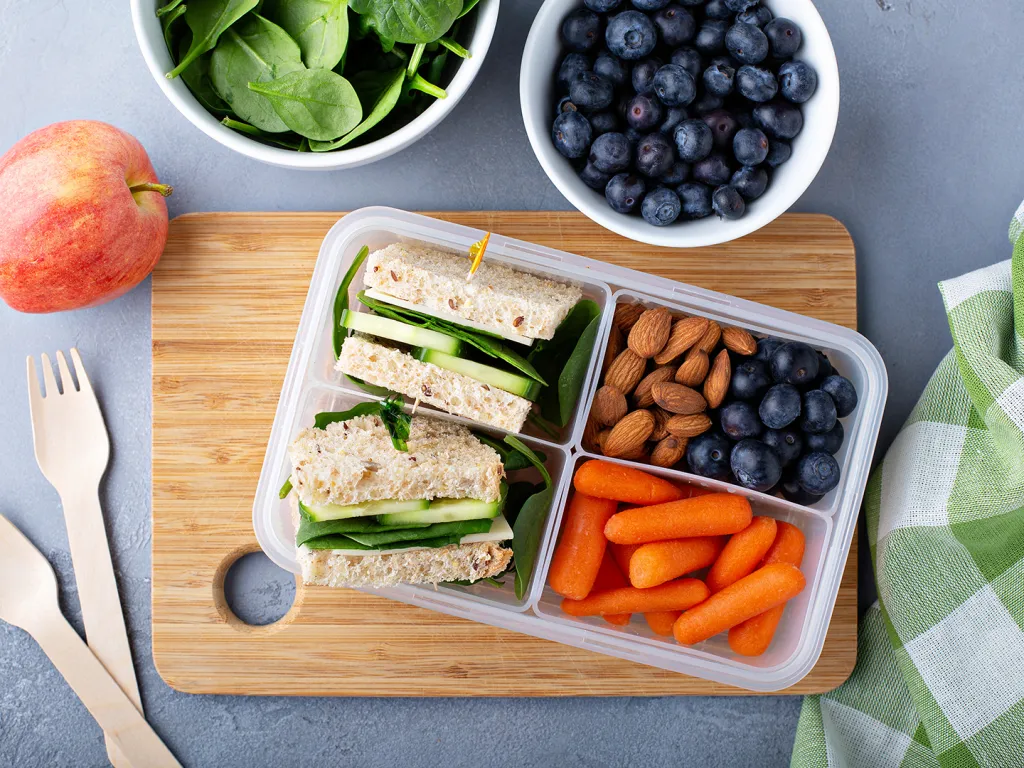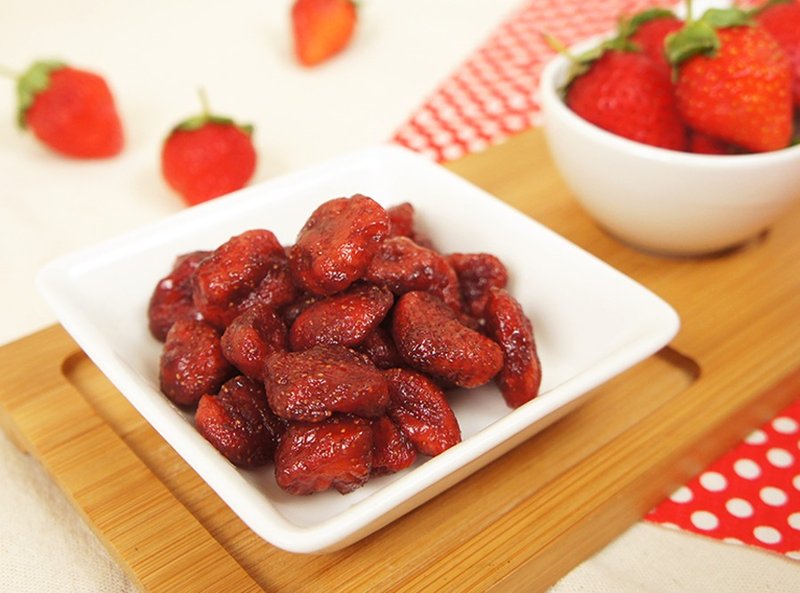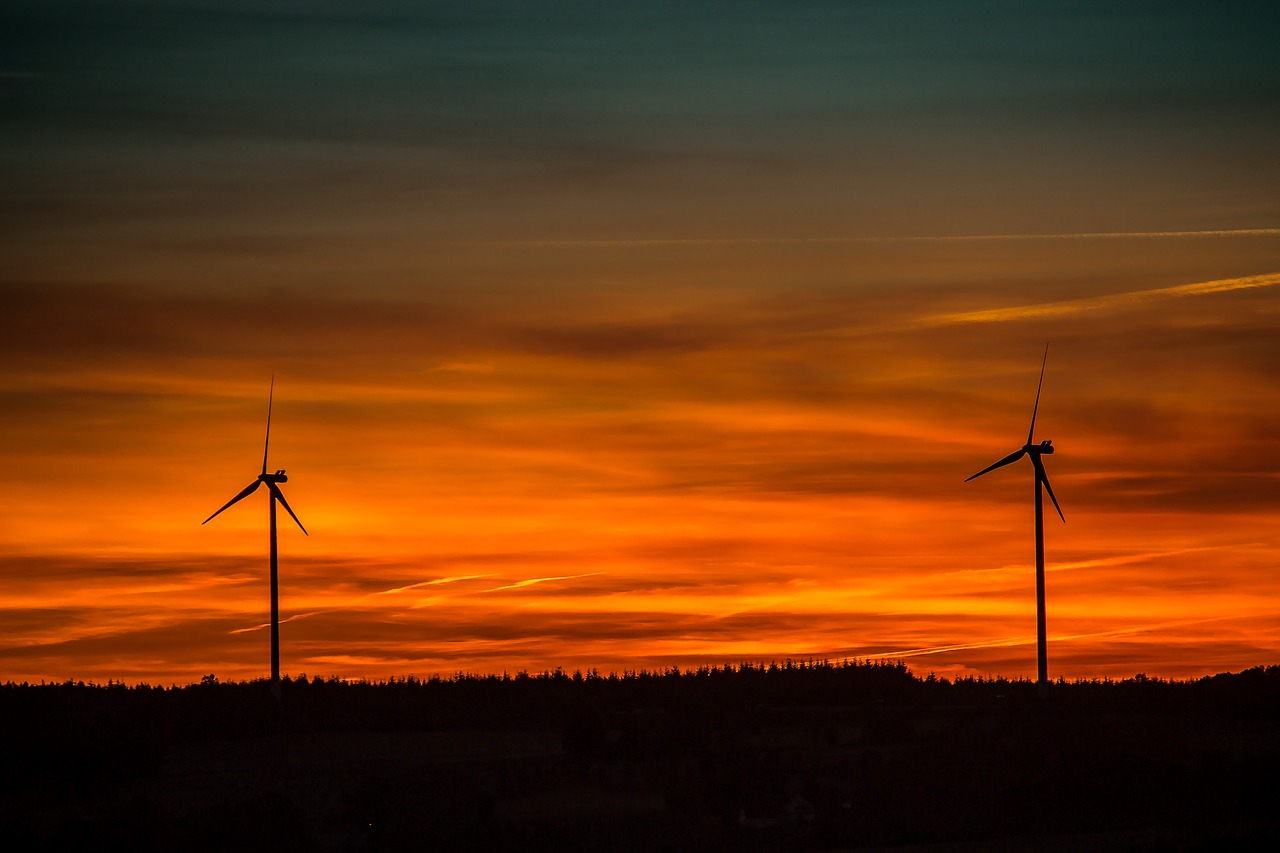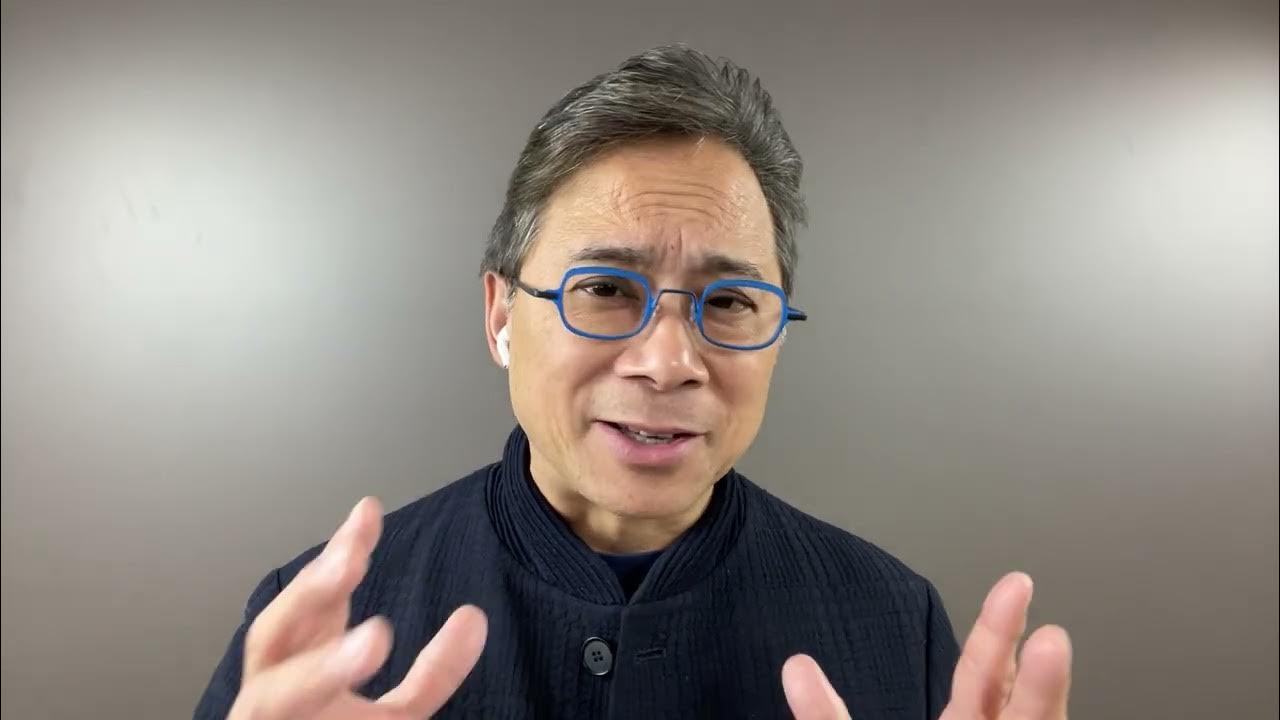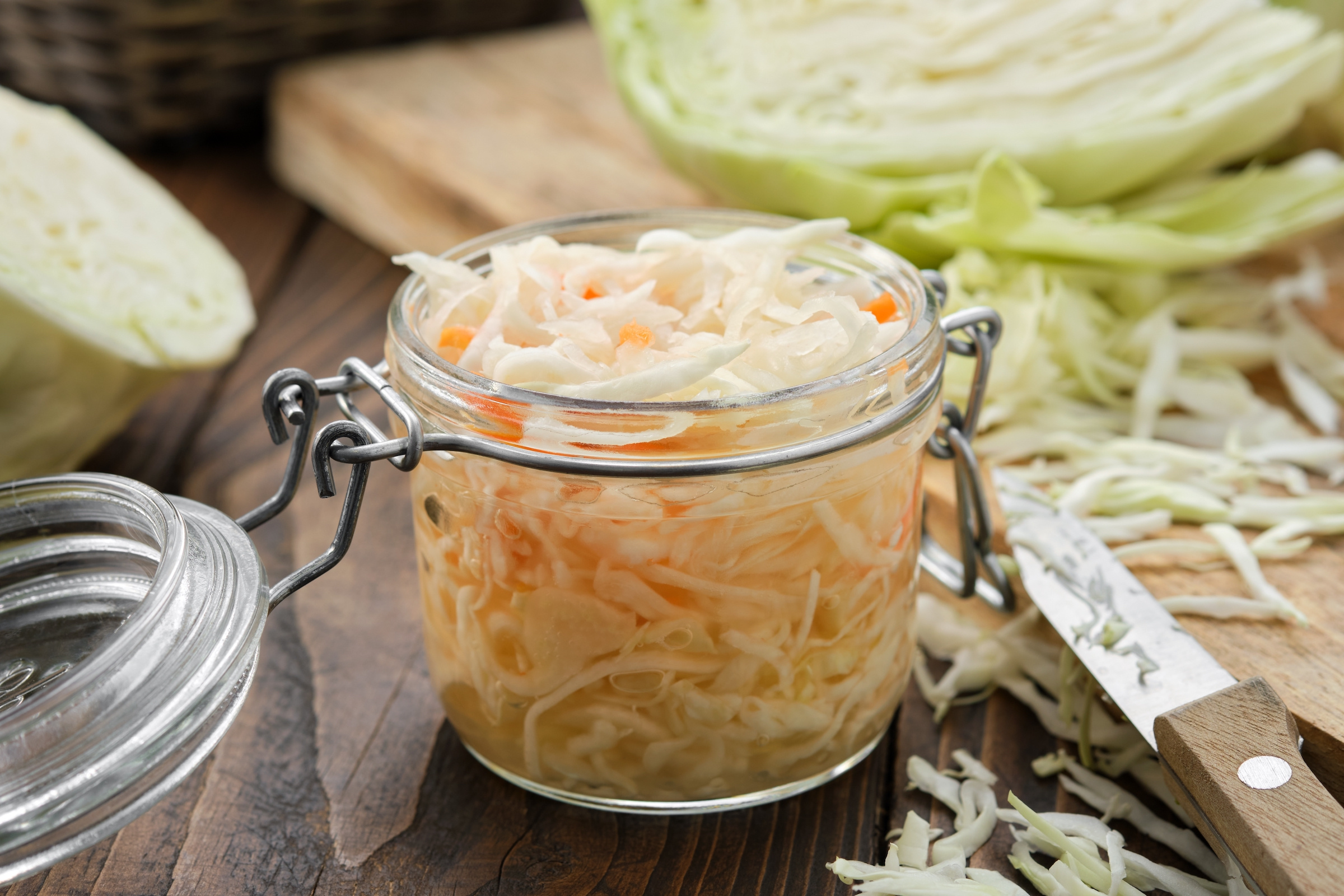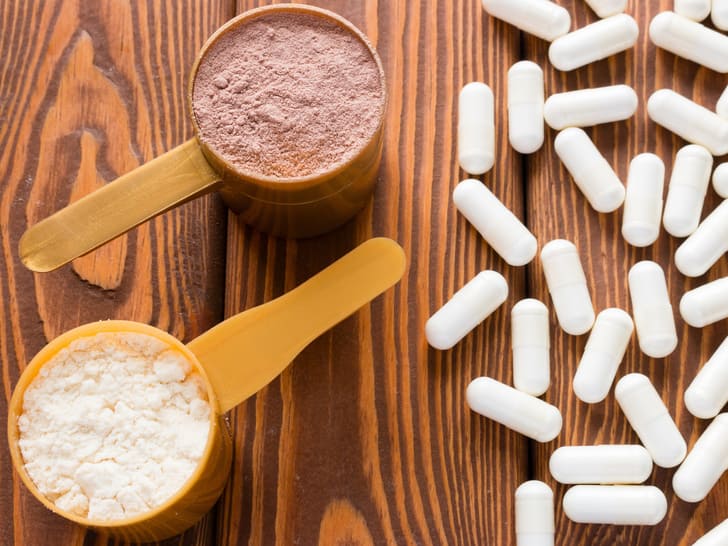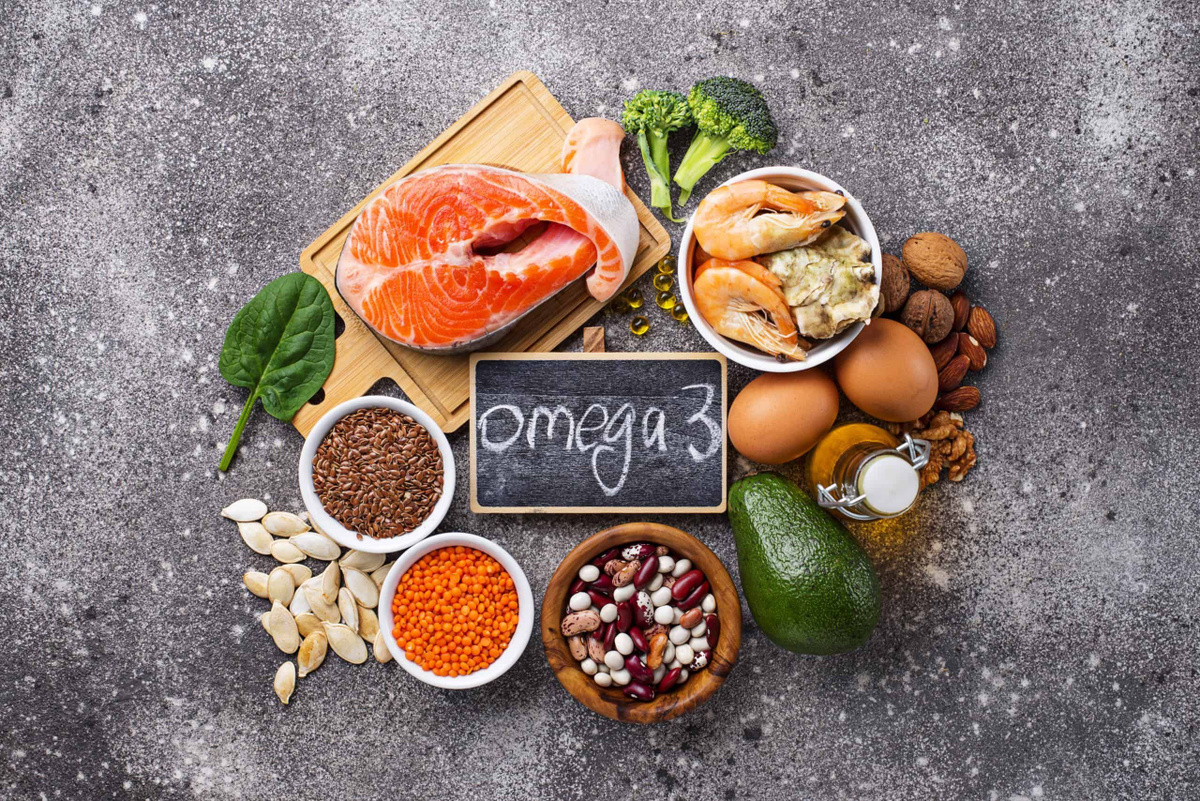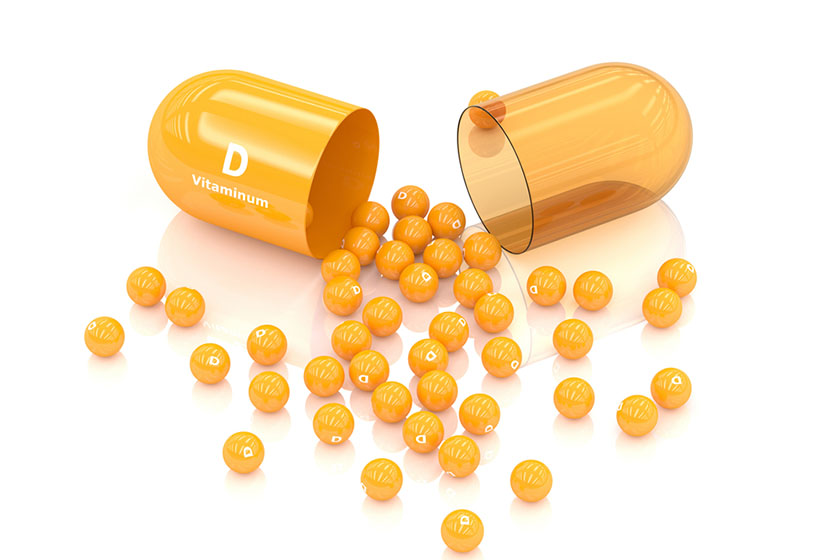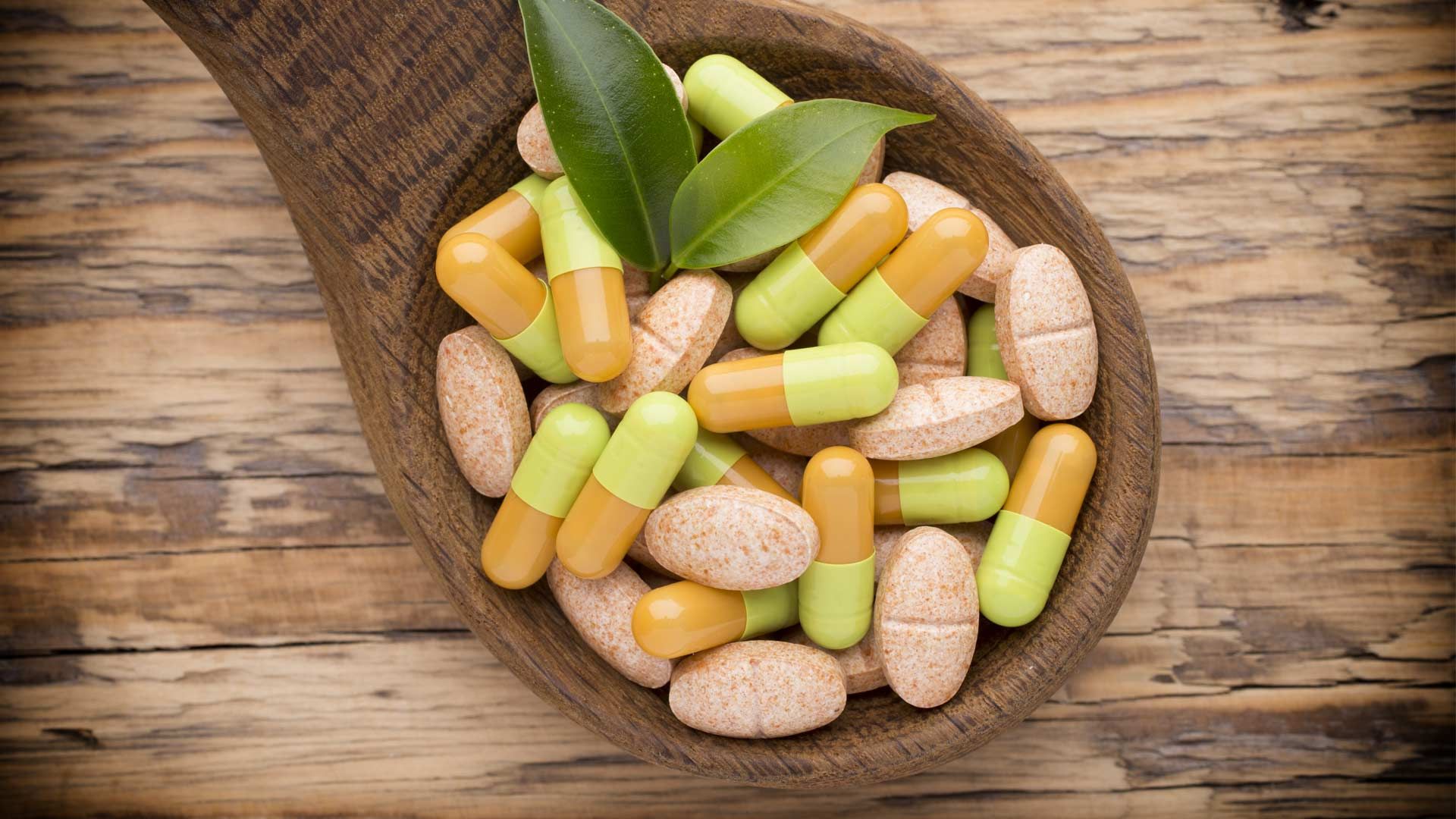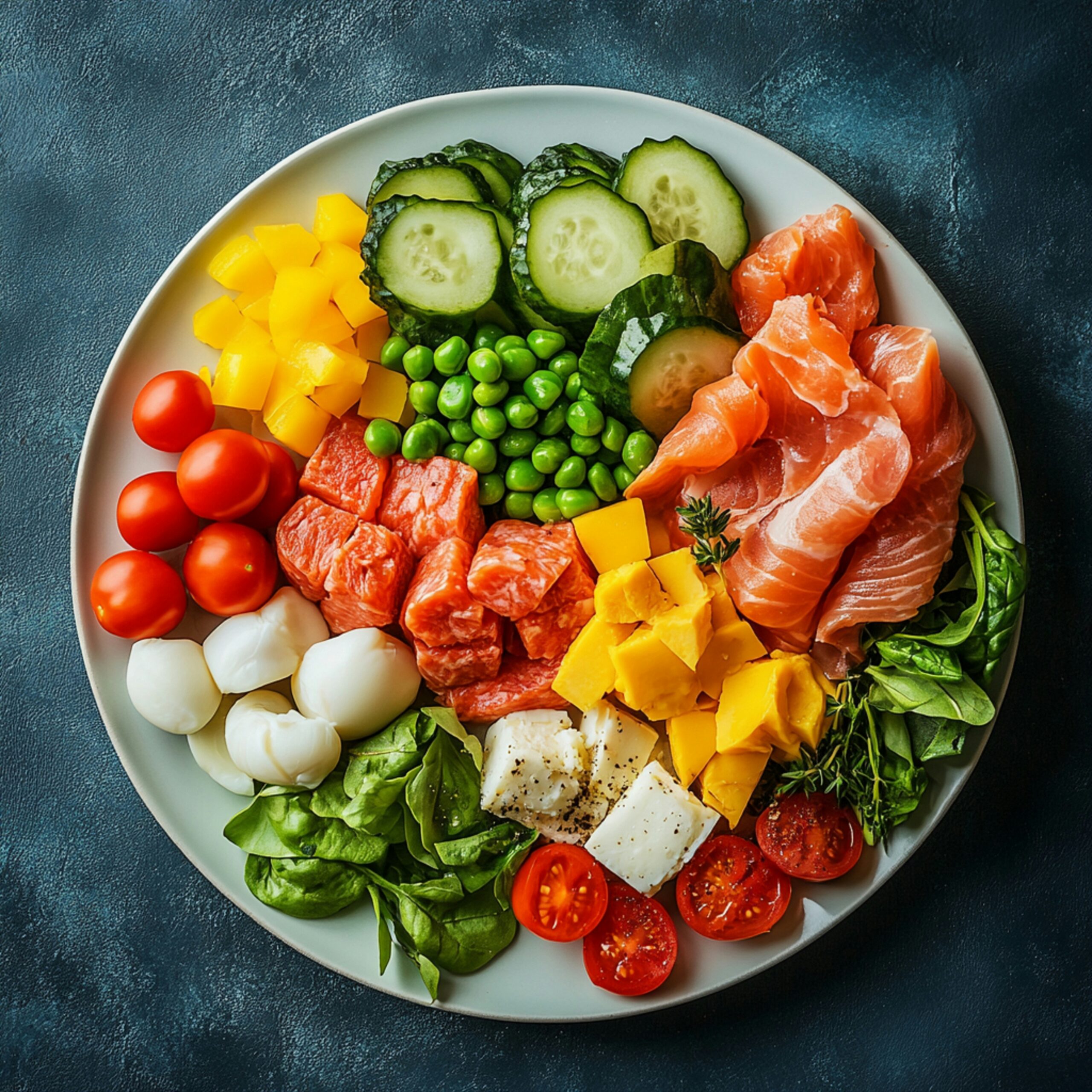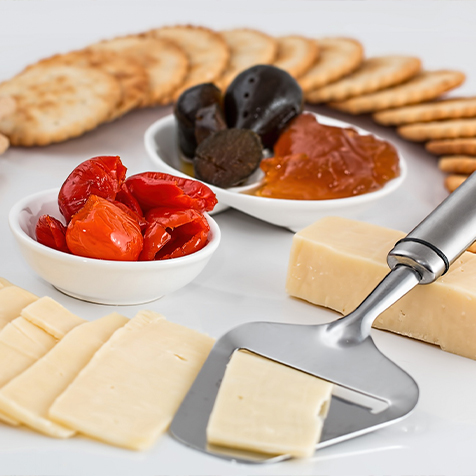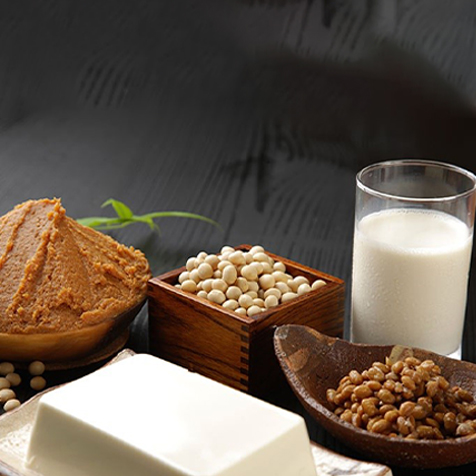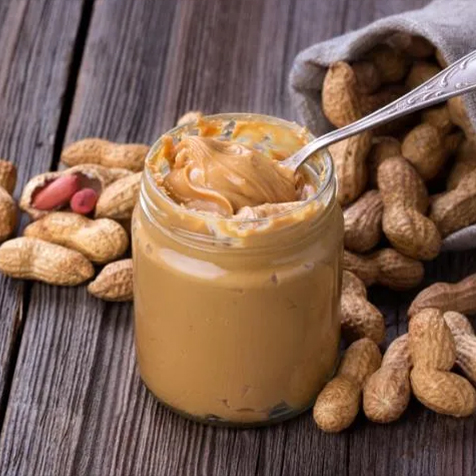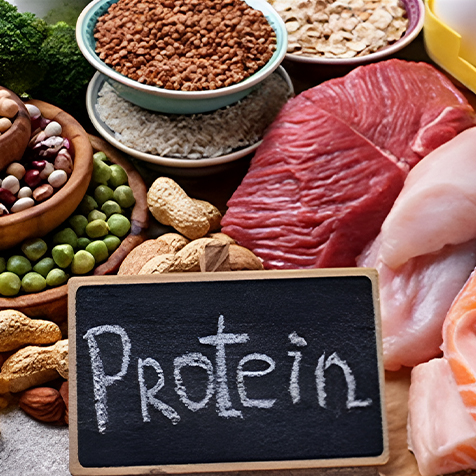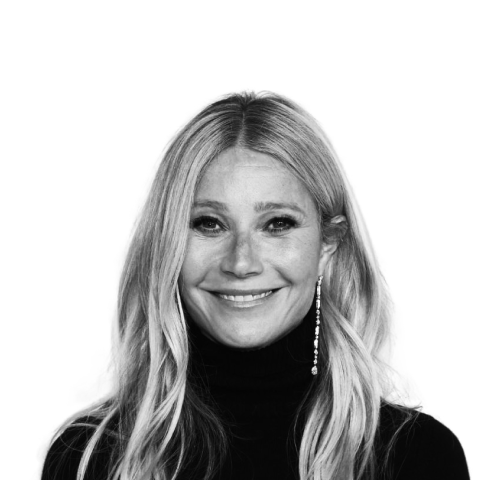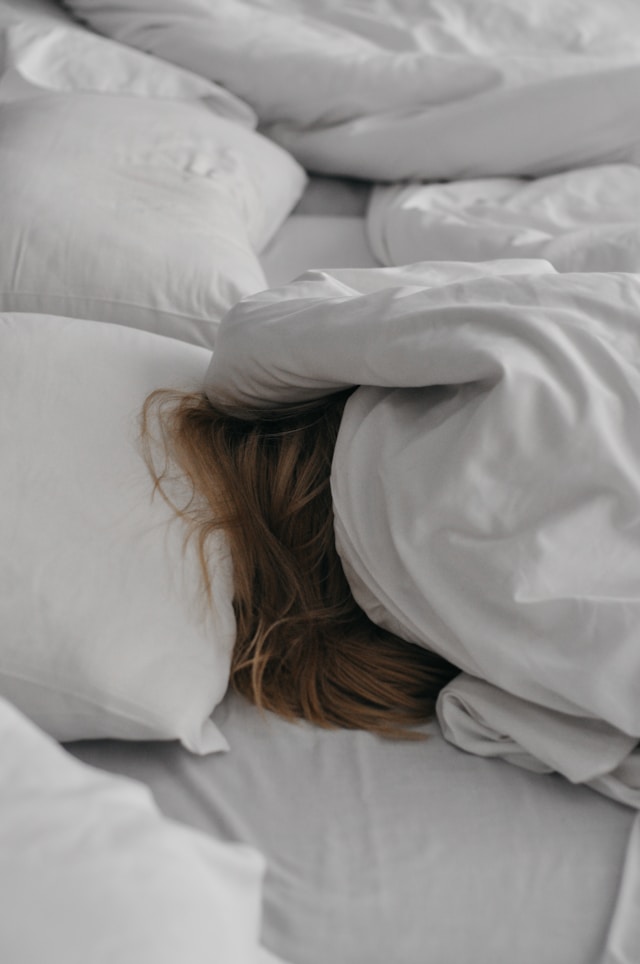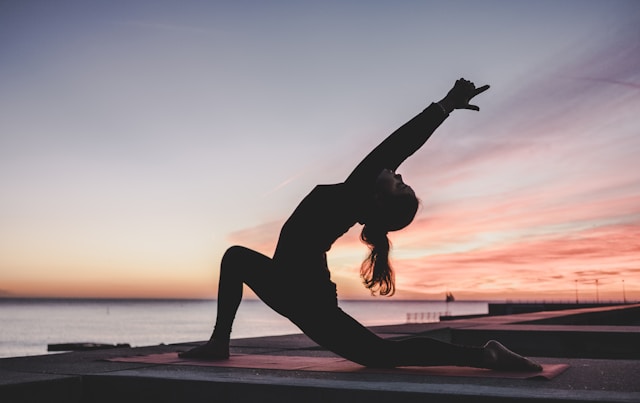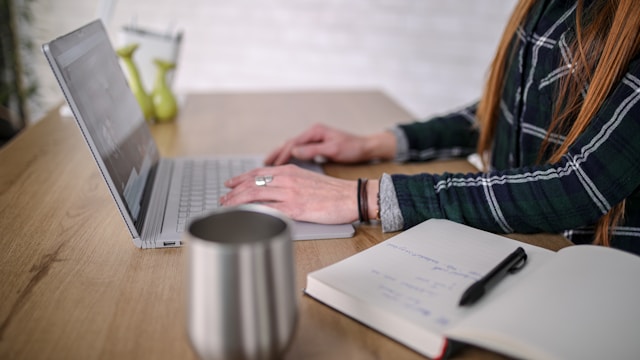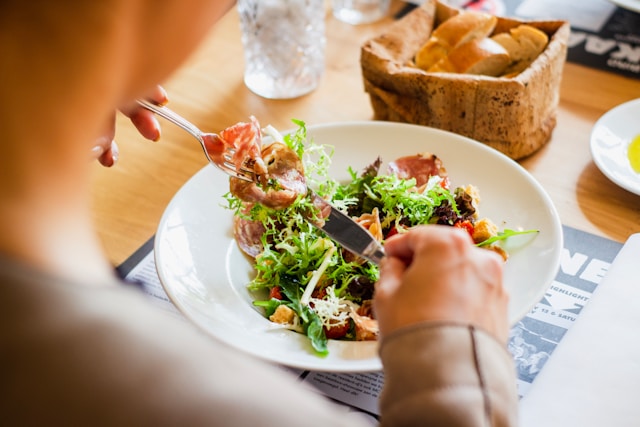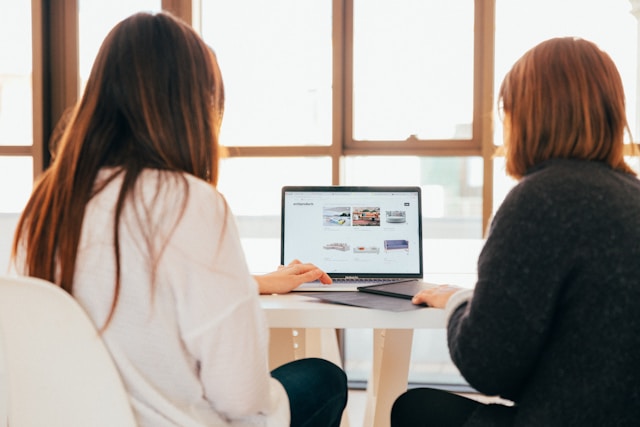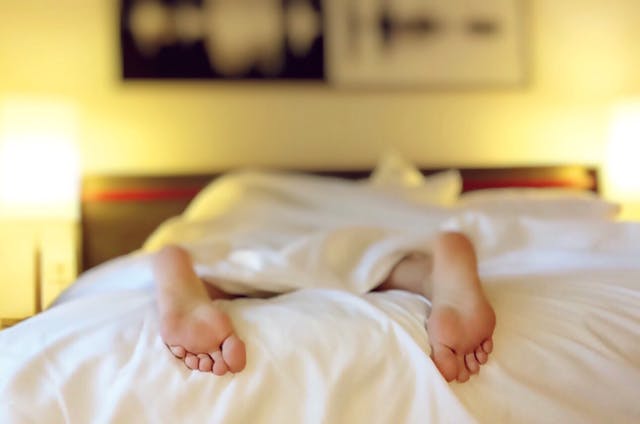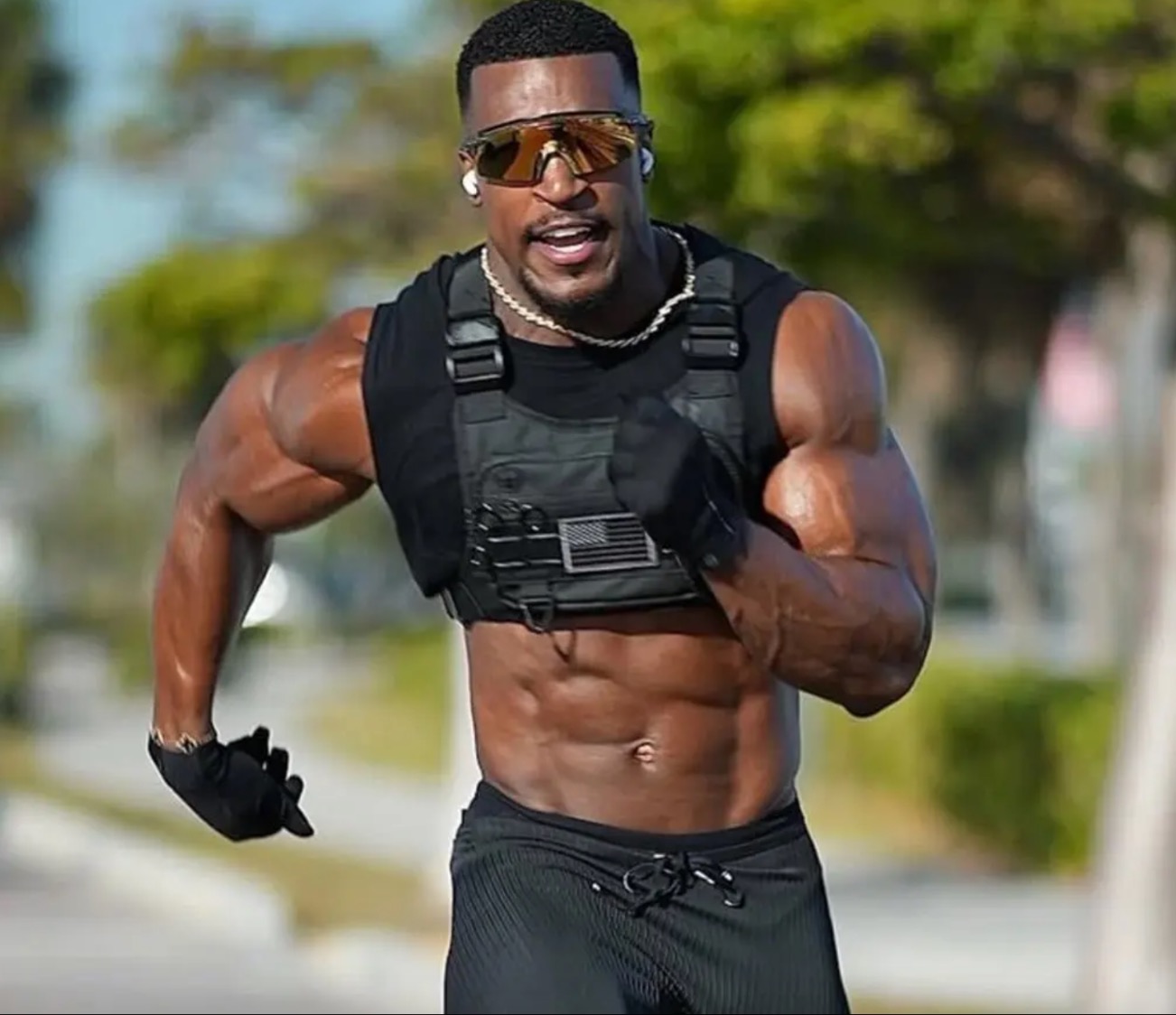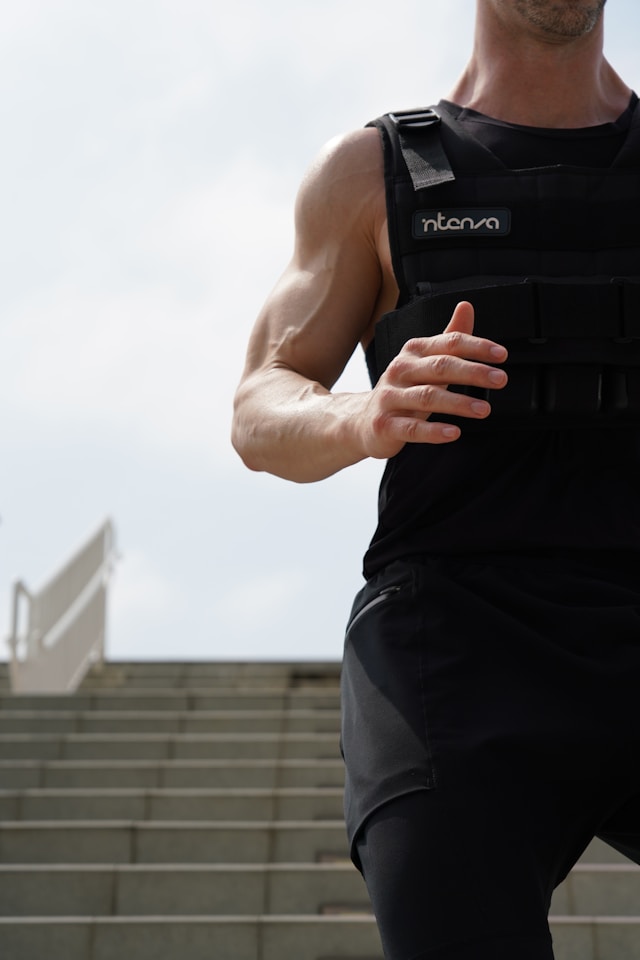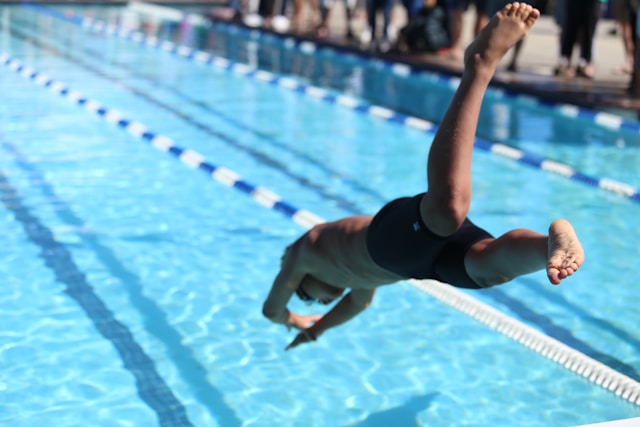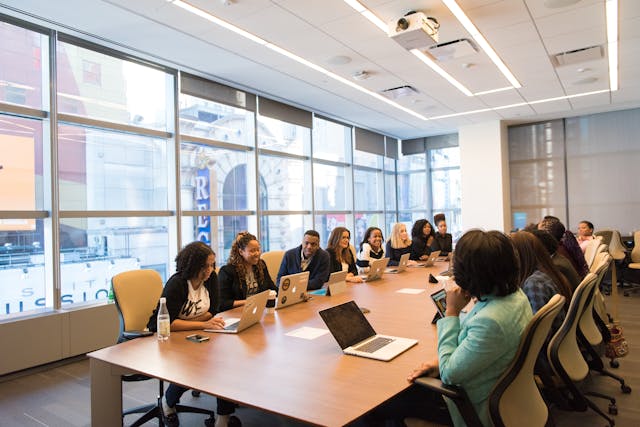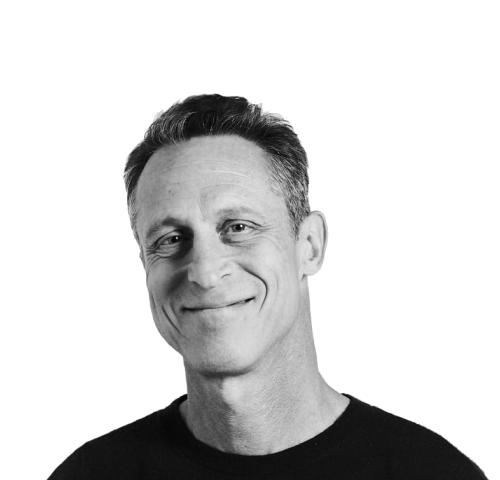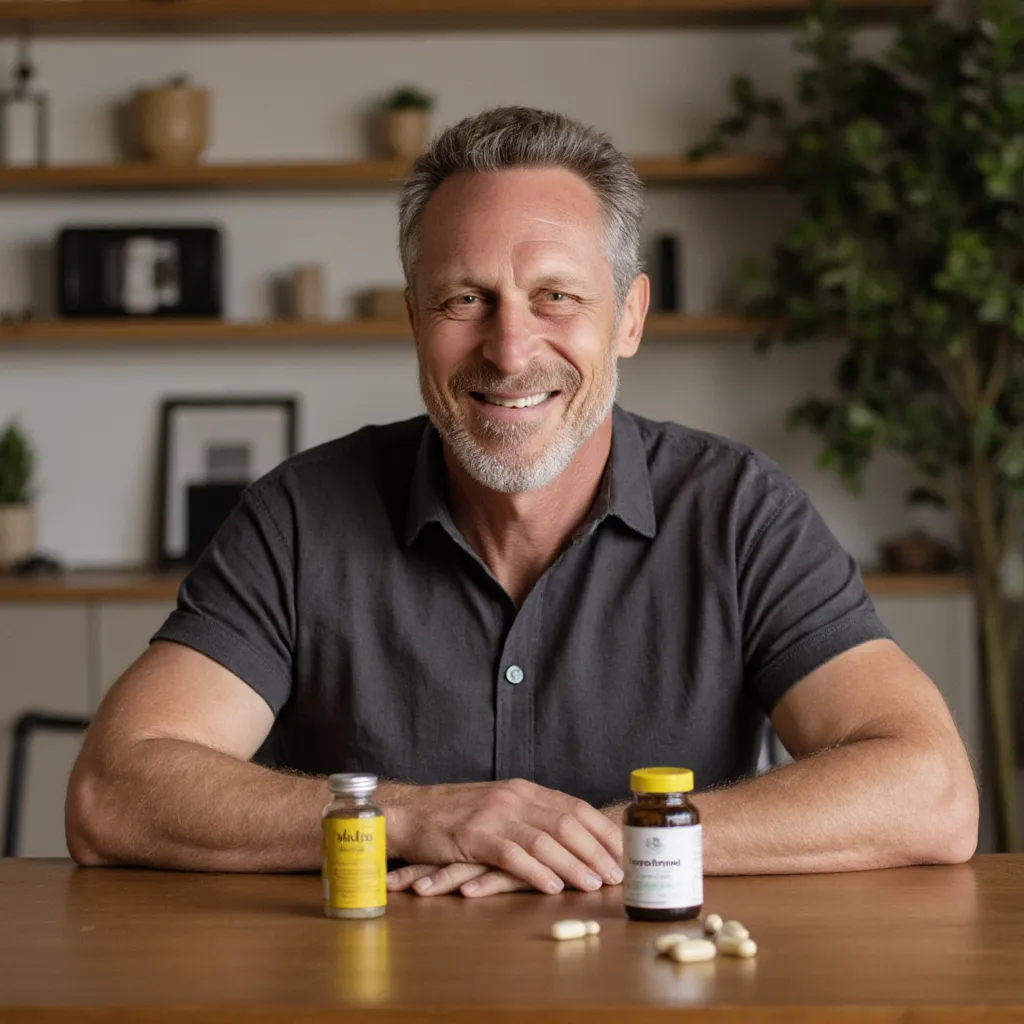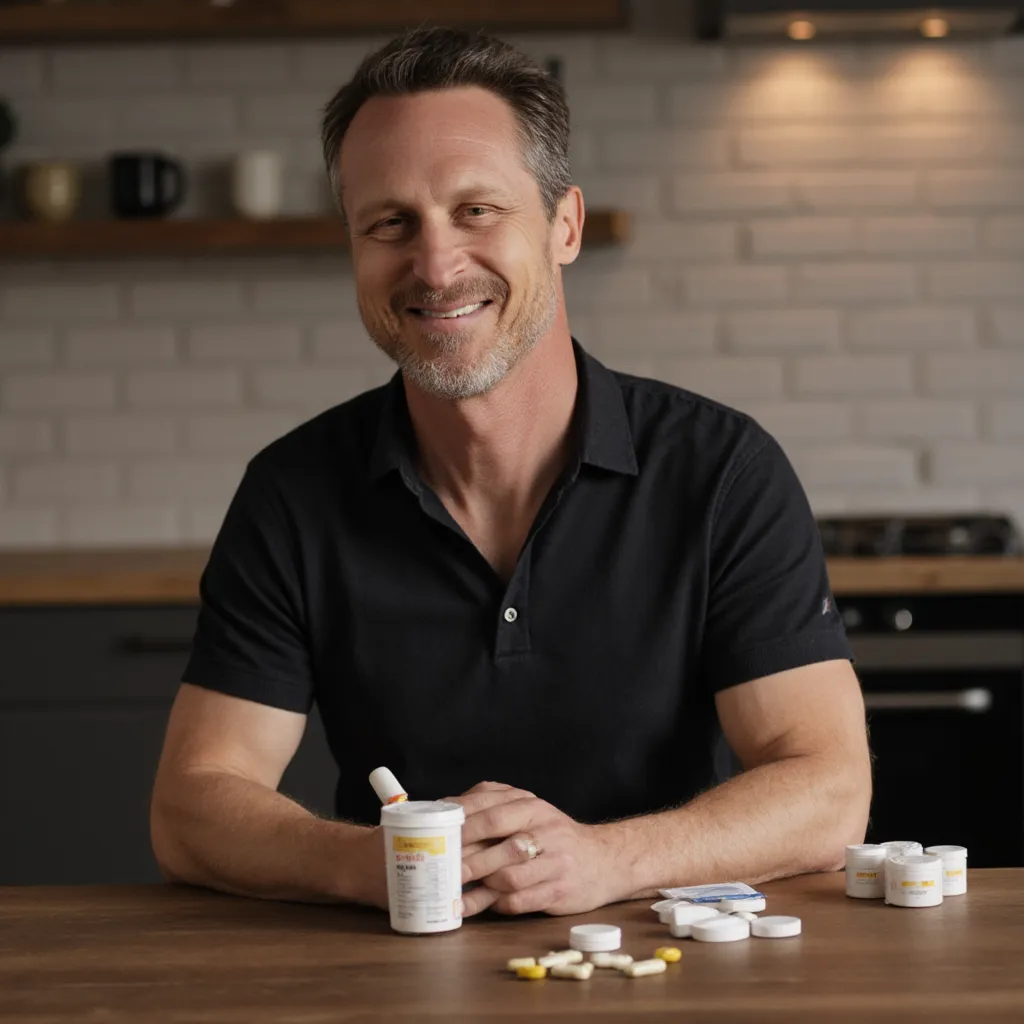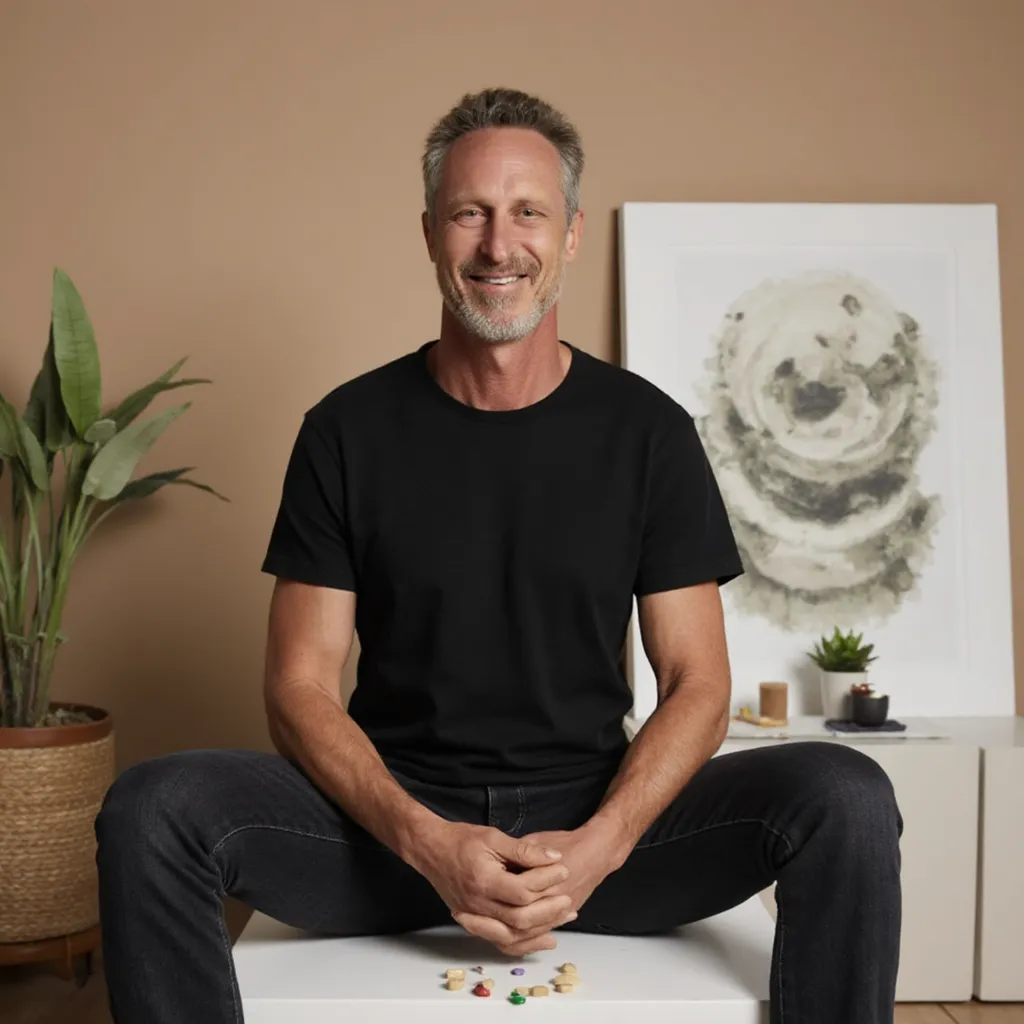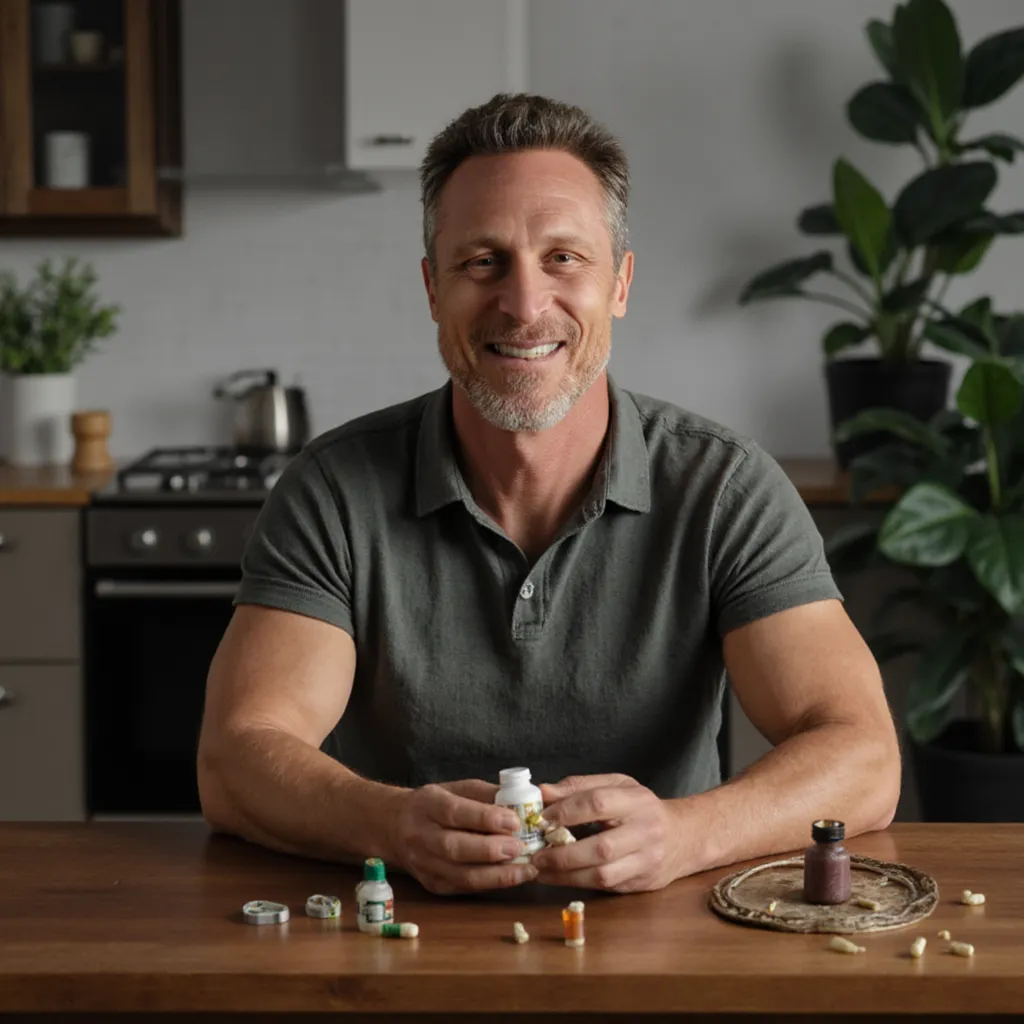Deepak Chopra’s Meditation Routine
How He Stays Calm and Focused
Deepak Chopra is known for his focus on mindfulness and inner peace. His daily routine includes regular meditation sessions that support mental clarity, emotional balance, and better sleep. From starting the day with a quiet morning meditation to using sleep meditation practices at night, he follows a consistent approach that helps him stay calm and focused. He also includes yoga and guided meditation as part of his overall wellness routine. This article will go over the Deepak Chopra meditation routine, including his morning habits, evening practices, and how he uses meditation to support his health.
- Published: May 2, 2025
- Last Updated: May 15, 2025
- Waking Up with Intention
- Morning Meditation Routine
- Benefits of Morning Meditation
- Morning Meditation Tools
- Late Morning Yoga
- Pranayama (Breathwork)
- Supplements to Support Meditation
- Morning Coffee Ritual
- Starting the Workday Mindfully
- Mindful Pauses and Breathing
- Afternoon Meditation
- Sunset Exercise
- Early, Light Dinner
- Nightly Meditation
- Preparing For Rest
- Deepak Chopra Meditation Evolution
-
-


Waking Up with Intention
Starting the day with calm awareness is one of the quiet strengths of Deepak Chopra’s meditation routine. Instead of rushing into activity, he begins his mornings by creating space for silence, presence, and mindfulness. This early morning stillness helps set a peaceful tone for the rest of the day.
- Wake-up time: He typically gets up between 5–6 a.m., allowing his body to follow a steady rhythm rooted in rest and consistency.
- Sleep foundation: A full night’s rest—usually around 8 hours—is essential to his energy levels and the quality of his morning meditation sessions.
- No harsh alarms: He prefers waking up naturally without an alarm. On days he needs a nudge, he recommends soothing music or a mantra instead of loud tones.
- Internal awareness: Instead of jumping out of bed, he spends about 30 minutes lying still, observing his thoughts and physical sensations. This gentle start supports his connection to presence and awareness.
- Silent stillness: This quiet time helps him shift from sleep into mindfulness, acting as a soft prelude to a deeper guided meditation or morning breathwork.
- Early morning calm: He values these moments of silence before the world gets busy, making it easier to ease into healing meditation or yoga.
These slow and mindful mornings create the right mindset for his meditation and yoga practices. It’s a small shift that turns waking up into a peaceful ritual, not just a routine.
Sleep is the best and most efficient way to keep your energy maxed out.
-


Morning Meditation Routine
The quiet of the early morning can shape the mood for the rest of the day. For Chopra, these hours are set aside to connect with stillness, create mental clarity, and settle into deeper awareness before the world picks up speed.
- Early start: After lying in stillness upon waking, he begins meditating around 5:30 or 6 a.m., using the morning’s calm to his advantage.
- Long sessions: His daily practice stretches up to 90 minutes or even two hours, showing how deeply ingrained meditation is in his lifestyle.
- Mindfulness-based approach: He begins with awareness of breath and body, allowing thoughts to pass without judgment.
- Daily focus: A short moment is spent setting an intention—often a simple word or idea to guide the day ahead.
- Mantra repetition: He silently repeats a Sanskrit mantra, which helps quiet mental activity and shift into a deeper state.
- Primordial Sound Meditation: This method, developed over time, uses personal mantras based on birth details to access stillness.
- TM influence: His early practice was shaped by Transcendental Meditation, which helped him manage stress and focus on personal growth.
- Supportive tools: For those looking to build a consistent habit, apps like Yoga Wake Up offer guided audio sessions to start the day with intention—even from bed.
This quiet, mindful practice isn’t about strict rules—it’s about creating space each morning to pause, breathe, and realign. Over time, it becomes a grounding rhythm that supports the rest of the day.
I wake up early and meditate for an hour. Meditation is a progressive quieting of the mind until you get to the source of the mind, which is pure consciousness.
-
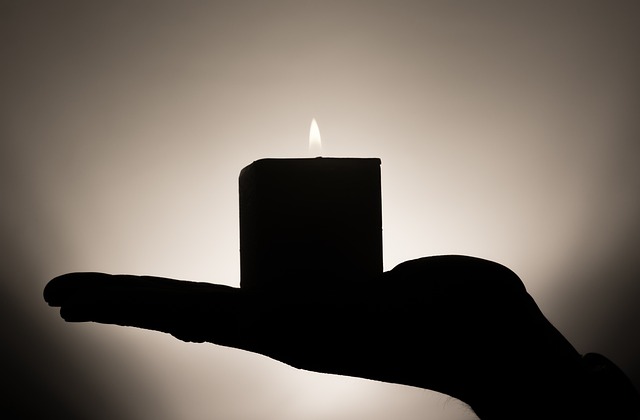
Benefits of Morning Meditation
Meditation first thing in the morning isn’t just about silence—it’s about creating a steady mindset before the demands of the day take over. He often points to this time as one of the most impactful parts of his daily rhythm.
- Balanced start to the day: Beginning with meditation helps create a calmer mental state before external stressors appear. He believes this sets the emotional tone for the day, allowing him to stay grounded and less reactive, even during busy periods.
- Mind-body alignment: Meditating at dawn helps synchronize the mind and body with natural rhythms like sunrise and circadian cycles. According to Deepak Chopra, tuning into these patterns supports better mental clarity, digestion, and energy regulation throughout the day.
- Stress management: He often explains that stress comes from how the mind perceives threats. Morning meditation helps reframe those thoughts before they spiral, keeping both emotional responses and physical symptoms—like tension or fatigue—in check.
- Improved immune support: Daily practice helps calm the nervous system, which in turn supports better immune function. Chopra connects lower stress levels with reduced inflammation, fewer health disruptions, and improved overall well-being.
- Mental clarity: Meditating in the early hours creates mental space before distractions set in. He often attributes his ability to write, teach, and make thoughtful decisions to the sense of clear-headedness he builds during this quiet time.
- Increased energy: After his meditation, he regularly reports feeling energized and focused. He attributes this not just to the practice itself, but to how it builds on a full night of rest. This combination gives him what he calls a “10 out of 10” energy rating.
- Daily consistency: He emphasizes that it’s not about sitting for hours—what matters most is showing up daily. A short session of the Deepak Chopra morning meditation can be just as effective if it’s done regularly and with intention.
- Suggested practice: For those just starting, he often recommends meditating for 20–30 minutes in the morning and again later in the day. This twice-a-day rhythm, similar to his own earlier Transcendental Meditation schedule, can lead to noticeable shifts in mood and focus.
Morning meditation can feel small in the moment, but over time, it builds a sense of control and calm that supports everything else—from how you think to how you rest at night. It’s a quiet commitment that pays off daily.
The main benefit of rising early is that you align your biorhythms with the rhythms of nature
-


Morning Meditation Tools
Preparing the mind for meditation often starts with preparing the space. He believes the surroundings should help the mind quiet down, not add more to think about. His approach focuses on simplicity, stillness, and small rituals that make the transition from sleep into mindfulness smoother.
- Quiet setting: He prefers a silent environment with little to no external noise. Rather than using music, he relies on stillness, allowing thoughts to settle without distraction.
- Natural background sounds: In his personal practice, he meditates in silence or with faint ambient sounds like birds or wind, but avoids melodic tracks that can stimulate the brain. For those new to the practice, his guided meditation sessions may include gentle sounds like soft rain or ocean waves to create a calm atmosphere.
- Home-based routine: Most of his morning meditation takes place at home, where he creates a space that feels calm and grounded without needing special decor or tools.
- Preparation rituals: Before sitting to meditate, he suggests brushing teeth and taking a warm shower to help signal wakefulness and move fully out of sleep mode.
- Ayurvedic practices: Simple rituals like a light oil massage and warm lemon water are part of his morning routine. These small steps energize the body and are commonly part of Ayurvedic self-care traditions he often supports.
- Body readiness: By the time he begins, his body is fully awake, and he’s already in a calm headspace.
- For new practitioners: If silence feels challenging, beginner-friendly tools like Headspace or Mindfulness offer light, guided sessions that ease users into meditation while they’re still in bed—serving as a practical entry point for building consistency.
While his personal style keeps things simple, his broader teachings show that the most helpful meditation tools are the ones that make it easier to sit with stillness. A calm space, a quiet mind, and a steady routine often matter more than any physical object.
If you meditate while listening to music you are not really giving your mind a clear message about what you want it to do,
-


Late Morning Yoga
After quieting the mind through meditation, he shifts his focus to waking up the body. Yoga, for him, isn’t just physical movement—it’s an essential part of staying mentally and physically clear as the day begins.
- Daily practice: Yoga has been part of his routine since his teenage years. It remains a steady habit that supports his overall well-being, alongside practices like meditation and mindful eating.
- Hatha-style sessions: His practice often centers around Hatha yoga, which focuses on slow, steady postures and breath awareness. These sessions help stretch the body gently and improve balance.
- Time commitment: He often spends up to two hours each morning on yoga and breathing exercises. It’s a significant part of his morning routine and one he rarely skips.
- Breathwork (Pranayama): Alongside movement, he includes breathing techniques to increase energy, calm the nervous system, and prepare his body for the day’s work.
- Consistency on busy days: Even when traveling or working long hours, he still fits in at least some stretching or breathwork to stay connected to his practice.
- Working with a teacher: Twice a week, he takes yoga classes with a teacher to deepen his practice and learn new postures or methods.
- Yoga as moving meditation: Each pose is performed with presence and awareness. His yoga sessions often feel like an extension of his meditation—focused, calm, and grounded.
- Physical and mental benefits: He credits his regular yoga practice with keeping him physically flexible, mentally relaxed, and youthful, even into his seventies.
Yoga in the morning doesn’t just prepare him for the day—it helps maintain long-term energy and clarity. Combined with meditation, this part of his routine plays a major role in the balance and strength he carries into daily life.
My routine starts at either 5 or 6 in the morning… I do two hours of yoga and pranayama, and then I meditate for another hour, so it takes me three hours to do my routine. I practice yoga for at least one hour every day. I haven’t missed a day of yoga for as long as I can remember
-


Pranayama (Breathwork)
Breath is often overlooked, but for Chopra, it’s one of the most accessible tools for mental clarity and emotional balance. He doesn’t treat breathing as background noise—it becomes a conscious practice that helps center him throughout the day.
- Part of his morning flow: Pranayama is typically practiced after meditation and alongside yoga postures as part of his extended Deepak Chopra morning routine.
- Focus on balance: One technique he uses is Nadi Shodhana, or alternate-nostril breathing. It’s known for calming the mind and balancing both sides of the nervous system.
- Energy-boosting breath: He also practices Kapalabhati, a short, forceful exhalation technique that helps energize the body and clear the sinuses—ideal for waking up fully after meditation.
- Simple but powerful: While he hasn’t detailed every breathwork exercise in his personal routine, he regularly recommends simple practices that anyone can learn to help manage stress.
- Breath awareness throughout the day: Even outside his formal sessions, he uses conscious breathing to pause and recentre—especially during long meetings or moments of tension.
- Enhancing meditation: These breathing exercises help prepare the mind and body for deeper stillness.
- Mental focus and clarity: Controlled breathing activates the body’s relaxation response, making it easier to stay calm, alert, and clear-headed.
- Physical effects: Regular breathwork improves oxygen flow, supports cardiovascular health, and contributes to the light, energized feeling that carries into the rest of his day.
Breathwork doesn’t require a mat, gear, or a quiet room—it just needs a few minutes of attention. As he teaches, a few mindful breaths in the morning can create a ripple effect of calm and awareness throughout the day.
As I’ve grown older, I’ve taken more time to do yoga and pranayama and exercise, and I work less than I used to.
-


Supplements to Support Meditation
Deepak Chopra’s meditation routine is grounded in stillness, breath, and consistent daily practice. For those building a similar habit or looking to deepen their focus, certain supplements may support relaxation, reduce stress, and improve mental clarity—especially when combined with a steady meditation practice.
-
Ashwagandha: A well-known adaptogen that helps regulate cortisol levels and ease stress. Regular use may support emotional balance, making it easier to settle into stillness without feeling overwhelmed.
-
Magnesium Glycinate: This calming mineral is especially useful for people who hold physical tension. It supports muscle relaxation and nervous system calm, which can improve posture comfort and mental quiet during meditation.
-
Rhodiola Rosea: A natural energy and focus booster that helps reduce fatigue without overstimulation. Ideal for people who feel mentally drained before practice or want more clarity during longer sessions.
-
Magnesium L-Threonate: Known for its ability to cross the blood-brain barrier, this form of magnesium may support cognitive function and clarity. It’s useful when your meditation practice requires deeper focus or reflection.
-
L-Theanine: Found naturally in green tea, L-Theanine promotes a calm but alert mental state. It’s particularly helpful for reducing anxious thoughts while maintaining mental sharpness during breathwork or intention-setting.
-
GABA (Gamma-Aminobutyric Acid): A naturally occurring neurotransmitter that promotes relaxation and lowers nervous system activity. GABA may be especially effective before sleep meditation or evening wind-down sessions.
-
Phosphatidylserine: This brain-supporting compound helps regulate cortisol and may reduce the impact of daily stress on the mind. It can support emotional stability and sharper focus, particularly helpful for guided sessions or mindful inquiry.
While Chopra’s approach emphasizes meditation through consistent practice and presence, these supplements can be thoughtful additions for those looking to support their mental stillness and overall routine.
-
-


Morning Coffee Ritual
After deep stillness and mindful movement, the next part of his morning is surprisingly familiar: enjoying a few cups of coffee. But this isn’t about rushing through a mug on the go—it’s about slowing down and taking pleasure in a small daily habit.
- A daily favorite: Once meditation and yoga are complete, he enjoys up to three cups of black coffee before noon. It’s a ritual that brings both joy and energy to his mornings.
- More than caffeine: He doesn’t drink coffee just to feel awake. He often points to research highlighting its antioxidant content and potential health benefits—especially for the brain and long-term cognitive health.
- Focus on quality: He avoids decaf and prefers regular, black coffee without sweeteners or milk. His goal is to keep the drink simple and close to its natural state.
- Mindful sipping: He treats coffee time as another mindful moment. This becomes a chance to stay grounded while enjoying something he genuinely likes.
- Shared morning ritual: He often sits down with his wife during this time, using it to chat, reflect, or gently plan the rest of the day. It’s a pause before work begins.
- Balanced approach: This simple habit—paired with stillness, breath, and movement—rounds out a routine that blends mindfulness with everyday pleasures.
- Coffee alternatives: Some people prefer starting their day with AG1, a greens supplement packed with vitamins and minerals, or Yerba Mate, a plant-based drink that offers gentle caffeine and antioxidants. Both can support morning energy in a different way from coffee.
In Chopra’s world, even a cup of coffee becomes an intentional act. It’s not separate from wellness—it’s part of it, grounding him in the present before the day picks up speed.
-
-
-
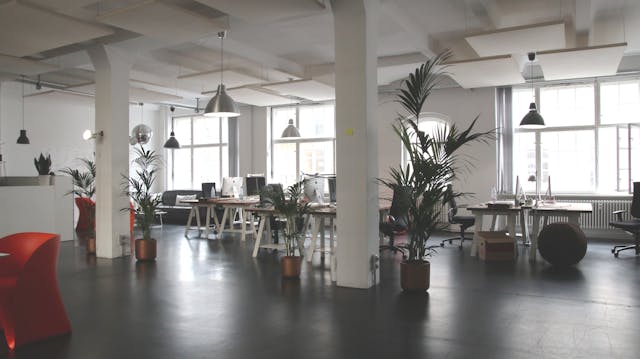

Starting the Workday Mindfully
Work doesn’t have to begin in a rush. Deepak Chopra’s transition from morning self-care to focused activity is slow and intentional. After several hours spent nourishing his mind and body, he approaches work with clarity—not urgency.
- Late start by design: His workday usually begins around 10:30 or 11 a.m., giving him several hours beforehand for Deepak Chopra meditation, yoga, breathwork, and reflection.
- Short work window: He typically works from late morning until 5 p.m., which helps maintain a sense of balance while still allowing time for writing, meetings, and creative work.
- Mindful structure: Instead of filling every hour, he keeps his schedule light. Chopra believes that fewer hours filled with focus and calm are more effective than a packed calendar.
- Listening to the body: He adjusts his work based on how he feels. If he’s full of ideas, he might spend time writing; if he’s low on energy, he’ll pause or stretch.
- No evening work: Unlike earlier in his career, he avoids working at night or on weekends. This boundary supports better rest and leaves room for sleep meditation or family time.
- Writing as a daily goal: On most days, he tries to write for an hour. It’s a creative habit that flows naturally from his morning stillness and mental clarity.
- Presence over pressure: Whatever the task—giving a lecture, recording a podcast, or answering emails—he aims to stay relaxed and fully present.
- Midday resets: Between tasks, he often takes small breaks for breathing, walking, or brief silence—mini practices that help him stay refreshed and focused.
Instead of letting work set the tone, he lets his state of mind guide his approach. The result is a workday that feels intentional, grounded, and supported by the rhythm of his morning practices.
-

Mindful Pauses and Breathing
Staying present isn’t limited to long sessions of meditation. He believes that mindfulness can show up in the small moments—right between emails, before a meeting, or even during a walk. These quick check-ins help him carry a sense of calm throughout the day.
- Short breathing breaks: He often takes a minute or two during the day to focus on his breath. Deep belly breathing or a few rounds of alternate-nostril breathing help bring his attention back to the present.
- Total meditation: He teaches that meditation doesn’t have to be limited to the morning. He encourages a mindset of being meditative throughout the day—something he refers to as “total meditation.”
- Gratitude check-ins: He might take a brief moment to appreciate something around him—his breath, his work, or the people in his life. These pauses help shift attention from stress to calm.
- Posture and stillness: Even during work, he might close his eyes for a few seconds, sit up straight, and relax his shoulders. These tiny shifts bring awareness back to the body.
- Re-centering between tasks: Instead of jumping from one task to another, he uses mindful breathing as a reset. This helps maintain the clarity and calm gained from his morning meditation.
- Prioritizing being over doing: He often repeats the idea that presence matters more than productivity. These pauses help him act from a calmer, more grounded place.
- Support for healing: Even in the middle of the day, breathwork and quiet reflection act as tools that support his larger practices like healing meditation or yoga.
These short pauses don’t take much time—but they keep the day from becoming overwhelming. By weaving moments of stillness into his routine, he brings mindfulness into everything he does.
-


Afternoon Meditation
As the day winds down, the body and mind often carry a quiet build-up of tension. He sees this time as an opportunity—not to push through—but to pause and reconnect. His afternoon approach to meditation reflects a balance between daily structure and personal rhythm.
- Past afternoon routine: For many years, he would meditate again around 5 p.m. This second session, usually 20–30 minutes, helped him release stress from the workday and mentally transition into the evening.
- Preferred meditation timing: He has often advised others to meditate twice a day—once in the early morning and again in the late afternoon before dinner—as a reliable structure for maintaining mental clarity.
- Shift to evening meditation: In his current routine, he has adjusted the second session to take place later, often around 8:30 p.m., after a light walk and an early dinner. This timing supports deep rest and better sleep quality.
- Maintaining consistency: Even on busy days, he makes time for a quiet moment. A five-minute walk, a few conscious breaths, or a short guided meditation on his phone can serve as a substitute when needed.
- Tech-supported mindfulness: While he prefers silent meditation, he acknowledges the value of tools like meditation apps. His own meditation app offers structured sessions and daily wellness check-ins, which he encourages for those looking to build a habit.
- Flexible practice: If a full session isn’t possible, he might use brief check-ins throughout the afternoon. These pauses help reset focus, prevent burnout, and maintain the sense of “being” developed in his daily meditation routine.
- Stress prevention, not just relief: He believes afternoon meditation is less about fixing stress and more about staying ahead of it. These pauses act as buffers against the constant demands of daily life.
- Entering the evening grounded: By the time dinner arrives, he often feels mentally clear and physically relaxed. This makes room for gratitude and calmness instead of exhaustion.
Rather than letting the day carry him to the finish line, he uses meditation to return to stillness before the evening. It’s a way to close the loop—bringing presence back into focus, just as it was at the start of the day.
-

Sunset Exercise
Evenings offer a chance to disconnect from the pace of the day. For Chopra, this is when movement becomes a quiet ritual. His walks are not just for fitness—they help him reset, reflect, and enjoy time with loved ones in a peaceful setting.
- Post-work transition: Around 5 p.m., he wraps up his work and shifts into a slower pace with a long walk, often joined by his wife or family.
- Daily light movement: These walks are relaxed and intentional. They provide gentle exercise and help clear the mental clutter that builds during a busy afternoon.
- Sunday strolls: On weekends, especially Sundays, he might walk for 5 to 10 miles through the city. These outings give him time for deeper conversation, nature, and simple presence.
- Mindful walking: Rather than walking just for steps, he stays present—focusing on his breath, each step, and what’s around him. It’s a form of moving mindfulness.
- Nature connection: Whenever possible, he walks through parks or green areas. He believes time in nature supports emotional well-being and enhances spiritual awareness.
- Physical health support: Daily walking contributes to his overall energy and mobility, helping him maintain long-term health as part of his broader wellness practices.
- Mental wind-down: These walks help him shift out of the active mindset built during the day. By the end, he feels mentally lighter and more at ease.
- Part of a larger rhythm: Along with his yoga routine and breathwork, evening walking rounds out the day with mindful movement.
Evening walks are a daily ritual that blend connection, presence, and light exercise. They serve as a natural way to transition into rest while staying grounded in the moment.
At 5 in the evening, I stop working and go for a walk. I walk about five miles a day in New York City.
-
-
-
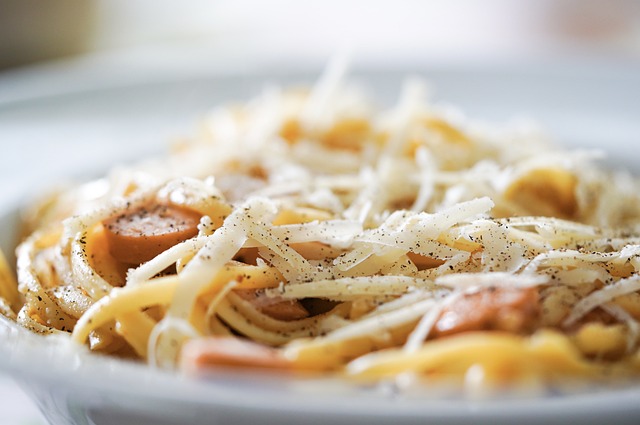
Early, Light Dinner
Evening meals aren’t just about food for Chopra—they’re a continuation of his mindful lifestyle. After a long walk and time to wind down, he eats in a way that supports restful sleep, calm digestion, and clear thinking into the night.
- Dinner timing: He typically eats around 6:00 or 6:30 p.m., leaving enough time for digestion before his evening meditation or bedtime.
- Light and simple meals: Dinner often consists of soup, salad, or other easy-to-digest plant-based foods. Heavy meals are avoided to prevent sluggishness or sleep disruption.
- Ayurvedic principles: His approach to eating in the evening is based on traditional Ayurvedic teachings, which recommend lighter meals at night to support better rest and energy flow.
- Connection to meditation: By keeping his stomach light, he avoids discomfort during evening reflection or sleep meditation. A calm digestive system helps him stay focused and at ease.
- Consistent routine: Just like his morning routine, his dinner habits stay mostly the same each day—simple, nourishing, and intentional.
- Balanced nutrition: While his lunch and breakfast may include heartier foods like lentils, rice, or fruit, his dinner is meant to ease the body into rest, not weigh it down.
- Support for better sleep: Eating early and lightly helps promote quality sleep and smoother transitions into nighttime practices, such as guided meditation or deep breathing.
- Mindful eating: Dinner isn’t rushed. He takes time to eat slowly and with awareness, treating it as another form of mindfulness that complements his broader wellness practices.
This small but steady habit supports both his physical health and his mental clarity. With less to digest, he ends the day with more energy for reflection, rest, and peaceful sleep.
I usually don’t eat after 6 p.m. I eat before sunset.
-
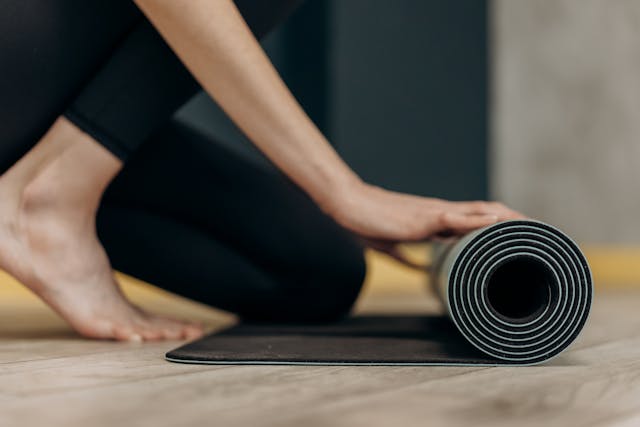

Nightly Meditation
Evenings offer a final opportunity to slow down and let go of the day’s energy. This quiet time is sacred for Deepak Chopra as it’s a chance to reconnect with stillness, reflect on the day, and prepare the mind for deep rest.
- Evening meditation time: Around 8:30 p.m., when the house is quiet and the workday is fully behind him, he begins his second meditation of the day.
- Shorter and gentler: Compared to the longer Deepak Chopra morning meditation, this evening session tends to be shorter—often 20 to 30 minutes—and has a more calming tone.
- Style of practice: Sometimes it’s silent mantra meditation, and other times he may use a guided meditation designed to ease the mind before bed.
- Entry into rest: This meditation often serves as a conscious step into stillness, setting the stage for sleep without rushing straight into bed.
- Gratitude practice: Before or after his meditation, he spends time reflecting on what he’s thankful for—often writing in a gratitude journal or mentally listing moments of joy, learning, or love.
- Occasional night yoga: On days with more free time, he might add a short restorative yoga session to release any leftover tension and complement his yoga routine.
- Support for restful sleep: These practices help quiet his thoughts, making it easier to move into sleep meditation or gentle rest with clarity and peace.
Nightly meditation is less about structure and more about softness. It helps him end the day in calm awareness—grateful, present, and ready to rest.
-
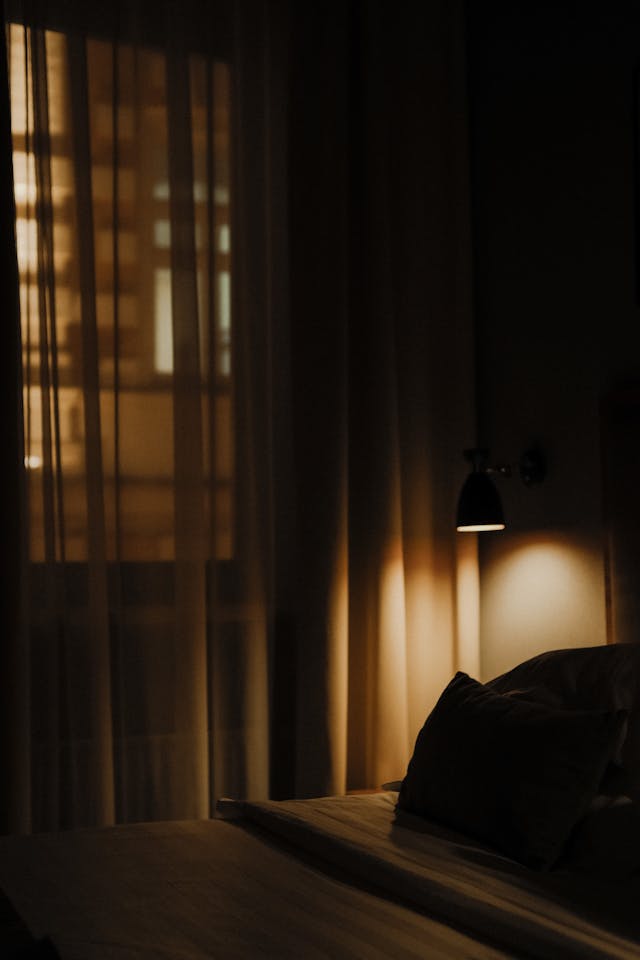
Preparing For Rest
As night approaches, Deepak Chopra doesn’t abruptly stop his day—he eases into rest with care. His nightly wind-down is the final phase of a routine built around presence, intention, and calm. It’s not just about sleep—it’s about how you arrive there.
- Bedtime routine: He usually goes to bed by 9 or 9:30 p.m., creating a consistent rhythm that supports natural sleep patterns and mental stillness.
- Avoiding stimulation: Evenings are free from heavy thinking or distractions—he avoids late-night work or intense shows, making space for reflection instead.
- Body-scan meditation: If his mind is restless, he might use gentle techniques like mindful breathing or body-scanning to relax each part of the body before sleep.
- Evening reflection: Gratitude journaling is often part of his nightly habit. Writing down moments of appreciation adds emotional peace and helps him shift away from mental noise.
- Deep self-inquiry: He sometimes reflects on deeper personal questions—like how he acted during the day or what values guided his choices.
- Monitoring sleep: While his practice is rooted in ancient traditions, he’s also open to modern tools like sleep trackers to review how well his rest supports overall wellness.
By the time his head touches the pillow, there’s nothing left unresolved—no buzzing thoughts or lingering tension. Instead, rest comes naturally, supported by everything he’s done throughout the day to stay centered and calm.
-
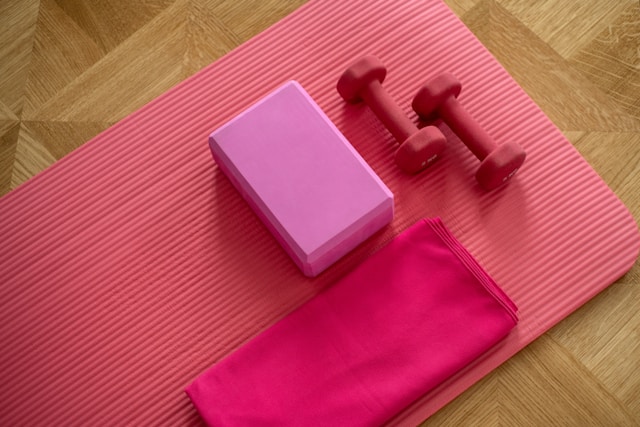

Deepak Chopra Meditation Evolution
The way Deepak Chopra meditates today wasn’t built overnight. His practice has grown gradually—shaped by decades of personal change, professional demands, and a deeper understanding of mind-body wellness. From short mantra sessions to long spiritual mornings, his approach has matured over time.
- Early habits: In the 1970s and early 80s, he lived a high-stress life as a physician—relying on caffeine and cigarettes, with little time for self-care.
- Introduction to meditation: At age 38, he learned Transcendental Meditation as a way to manage stress. Starting with two 20-minute sessions per day helped him replace harmful habits with calm and clarity.
- Adding structure: In the late 1980s, he began incorporating Ayurvedic practices—eating better, waking earlier, and including light yoga into his daily rhythm.
- Developing his own method: In the mid-1990s, he created Primordial Sound Meditation and began practicing it regularly, building his day around silent, mantra-based sessions.
- Growth in duration: By the 2000s, he increased his meditation time, sometimes sitting for an hour in the morning, followed by movement like yoga or a walk—forming the foundation of the Deepak Chopra morning routine many recognize today.
- From cardio to calm: While he used to jog earlier in life, over time he shifted to gentler practices like walking and yoga, blending movement with mindfulness.
- Encouraging others: He has long emphasized that meditation doesn’t need to be long or perfect—just consistent. “If you’re too busy to meditate for 20 minutes, meditate for an hour,” he once joked, reinforcing its value.
- New tools and tech: During the 2010s, he added gratitude journaling and began experimenting with wellness tech—creating apps, trying biofeedback, and offering guided meditation through digital platforms.
- Stronger nighttime routine: Over the years, he began adding evening practices like sleep meditation and self-reflection to support deeper rest and inner balance.
- Current daily rhythm: Now in his 70s, his schedule includes nearly three hours of morning practice—blending meditation, pranayama, and yoga—with shorter evening sessions to complete the day.
- Staying rooted: While the tools and timing have shifted, the foundation of his practice remains the same: meditate twice a day, move the body, eat mindfully, sleep well, and keep the heart open to gratitude.
Deepak Chopra’s routine continues to reflect what he teaches—that meditation is not fixed, but grows alongside us. From his earliest days of stress relief to a deeply spiritual lifestyle, his practice shows how self-awareness and consistency can shape a more peaceful life at any stage.
-
-
References
Deepak Chopra’s Daily Wellness Routine
Deepak Chopra’s Morning Routine
Gage Skidmore, “Deepak Chopra,” November 17, 2019. Licensed under CC BY-SA 3.0. Source: Wikimedia Commons.
